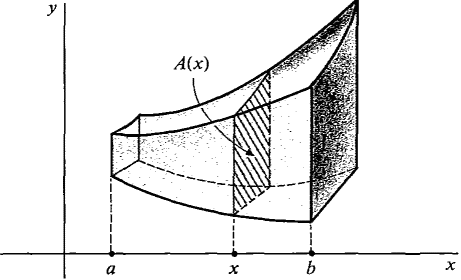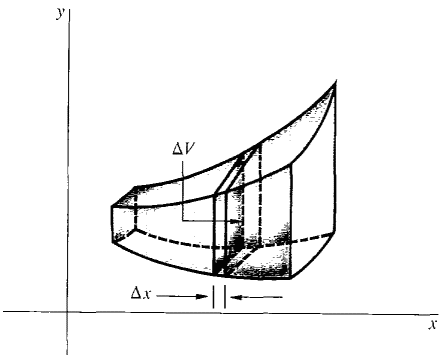| The ebook Elementary Calculus is based on material originally written by H.J. Keisler. For more information please read the copyright pages. |

|

Home  Applications of the Integral Applications of the Integral  Infinite Sum Theorem Infinite Sum Theorem  Volume of a Solid Volume of a Solid |
|||||






|
|||||
Volume of a Solid
We now use the Infinite Sum Theorem to derive a formula for the volume of a solid when the area of each cross section is known. Suppose a solid S extends in the direction of the x-axis from x = a to x = b, and for each x the plane perpendicular to the x-axis cuts the solid in a region of area A(x), as shown in Figure 6.1.5. The area A(x) is called the cross section of the solid at x. The volume is given by the formula: VOLUME OF A SOLID
Figure 6.1.5 JUSTIFICATION
Figure 6.1.6 and thus its volume is given by ΔV ≈ A(x) Δx (compared to Δx). (The infinitesimal error arises because the area of the cross section changes slightly between x and x + Δx.) Then by the Infinite Sum Theorem,
The pattern used in justifying the two formulas in this section will be repeated again and again. First find a formula for an infinitesimal piece of volume ΔV. Then apply the Infinite Sum Theorem to get an integration formula for the total volume V.
|
|||||
Home  Applications of the Integral Applications of the Integral  Infinite Sum Theorem Infinite Sum Theorem  Volume of a Solid Volume of a Solid |
|||||
Last Update: 2010-11-25






